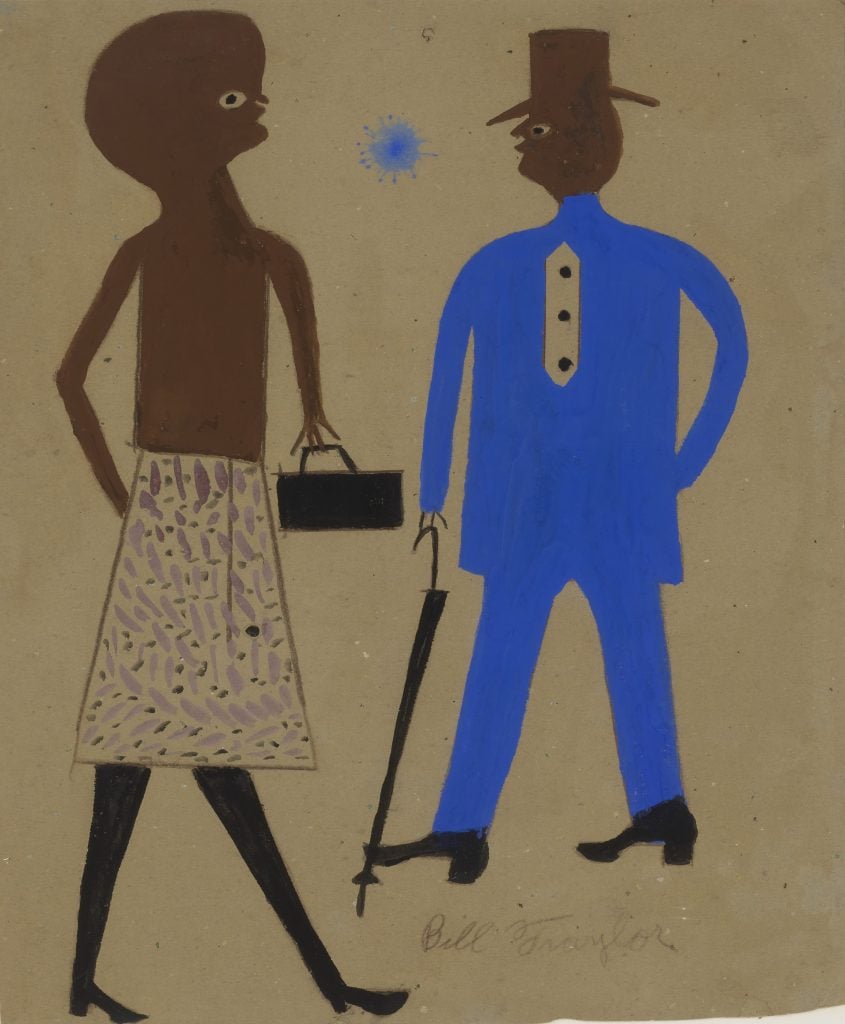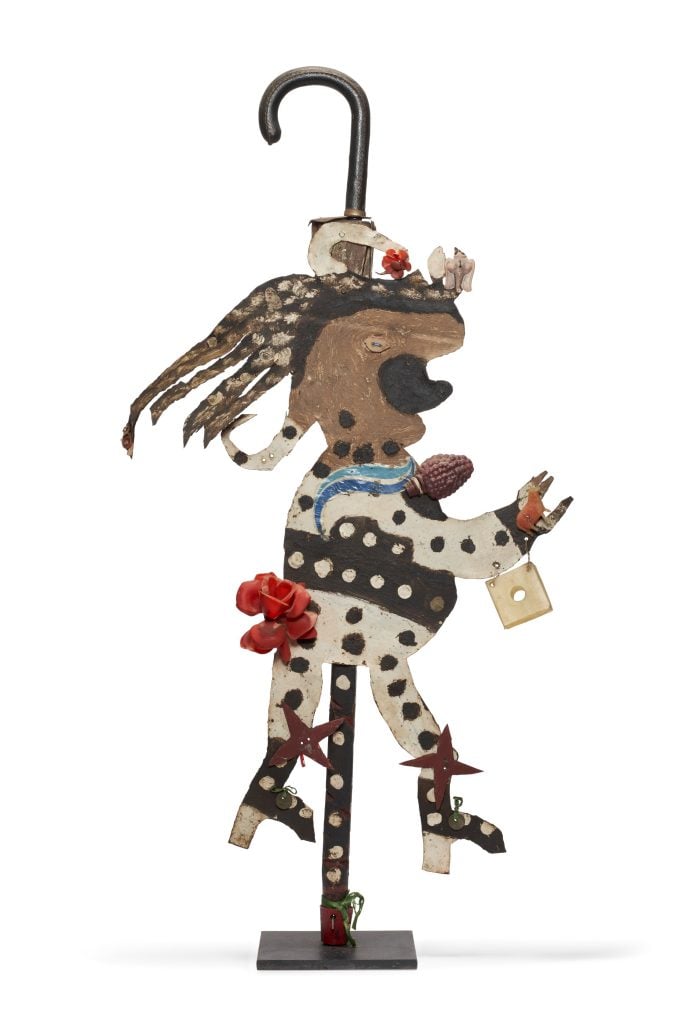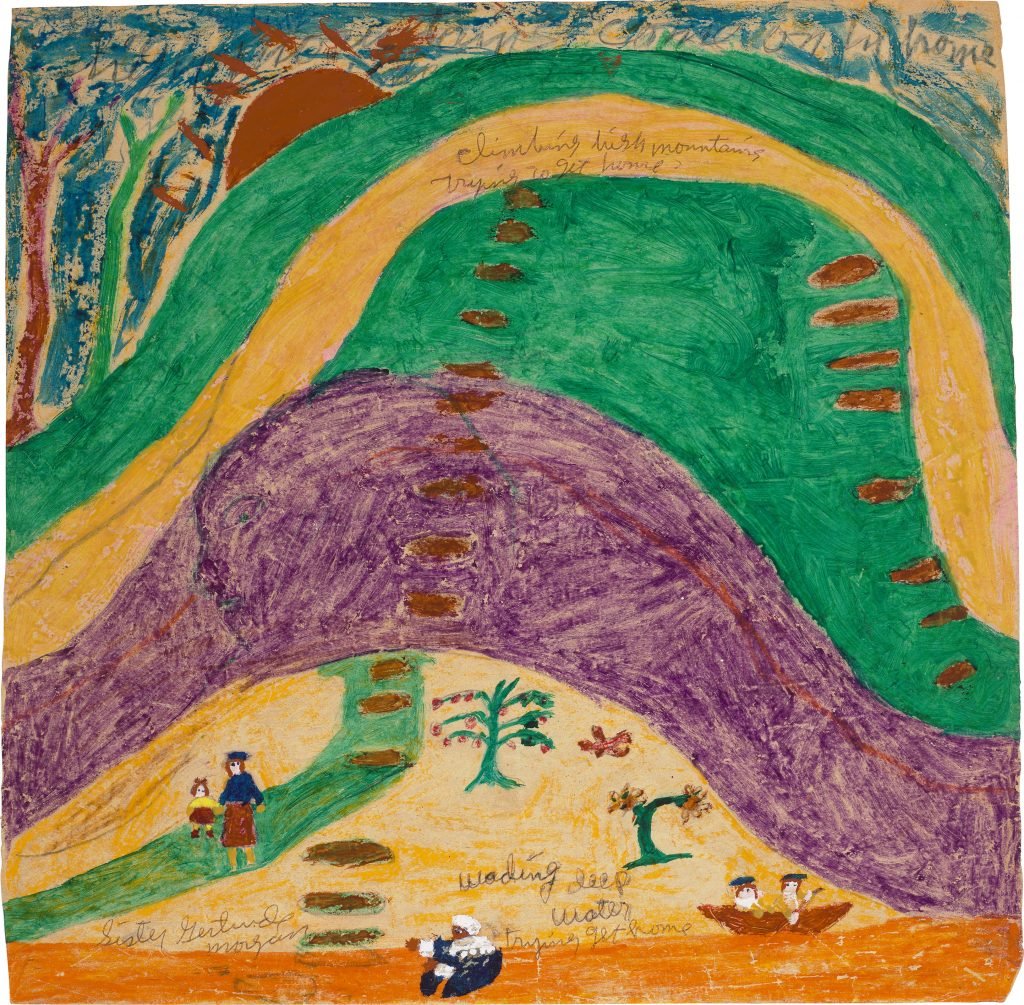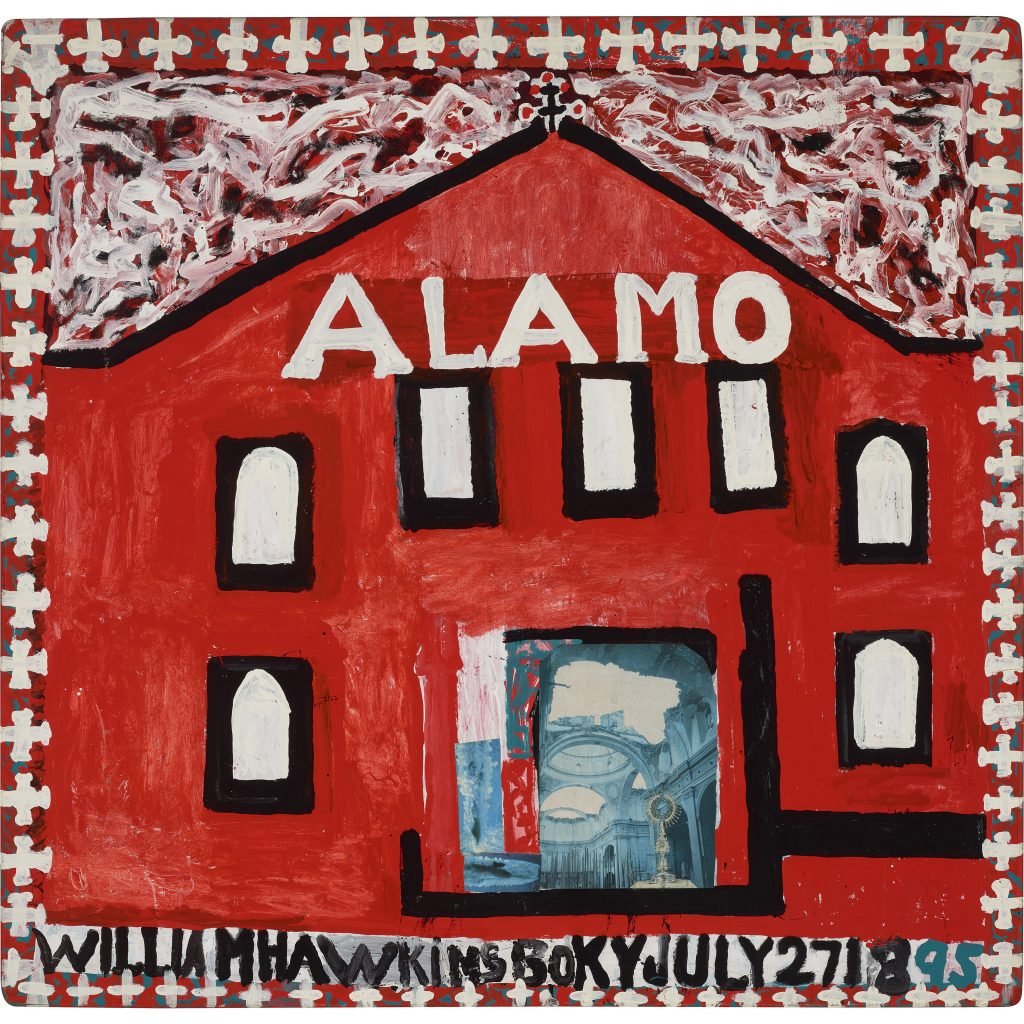Artnet News Pro
A Wave of New Buyers Is Flocking to Outsider Art as Collectors Seek to Broaden Their Horizons at Accessible Price Points
A dedicated sale at Christie’s New York on Thursday brought in $2.2 million.

A dedicated sale at Christie’s New York on Thursday brought in $2.2 million.

A lively sale of Outsider art at Christie’s New York on Thursday morning totaled $2.2 million, with a sell-through rate of 98 percent across 143 lots. Without any of the more spectacular figures that have been realised in this category in recent years, the sum only just topped the $2.1 million the house brought in last year across 90 lots. (Final prices include buyer’s premium, unless otherwise noted, presale estimates do not.)
Still, interest was heated with the top lot, Bill Traylor’s Untitled (Man and Woman), setting off a fast-paced bidding frenzy and an exclamation of “lots of paddles in the air!” from the rostrum. The hammer price was $140,000, outperforming the $120,000 high estimate.
Typically, the artists that attract the most impressive bids in this category remain a small pool of American artists, among them Traylor, Henry Darger, Thornton Dial, and the Mexican-born Martín Ramírez, who migrated to California. Top lots have caused little surprise, with works by Traylor also leading the sales in 2021 ($293,750) and 2020 ($507,000). In 2019, his highest selling work of $396,000 set a new record, but fell short of the $684,500 realized by a double-sided watercolor by Darger.
But at Christie’s February 3 sale, two works by Traylor failed to sell while others did not reach their low estimates, including Brown Buzzard which hammered at $28,000 (estimate: $30,000-50,000). Interest in the more established names was muted compared to the fierce competition for rising stars who have yet to gain widespread recognition.

David Butler, Walking Stick with Figure (circa 1975). Courtesy Christie’s Images Ltd.
To wit, the true star of the sale was David Butler, represented by sculptures from the collection of his champion, the curator William A. Fagaly. Seven of these broke Butler’s existing record, with Walking Stick with Figure (circa 1975) reaching dizzying heights of $62,500, over a high estimate of $8,000. Also setting new records, at $32,500, Raymond Materson’s Till Death Do Us Part (1993) easily exceeded its high estimate of $4,000 and the hammer price of $20,000 for Emery Blagdon’s Untitled (circa 1956-1984) was several times the $5,000 high estimate.
Christie’s head of Outsider and folk art, Cara Zimmerman, noted that the number of artists who have developed a stable enough market to be presented at auction is rising. “Each year we’re finding new records for artists that may not have been on our radar a decade ago,” she said.
This is rarely the result of a meteoric rise, according to Andrew Edlin, a dealer who owns the Outsider Art Fair. “Sometimes in the contemporary art world, artists fresh out of art schools are picked up by a big gallery and there’s a lot of hype,” he said. “In the Outsider Art world the market for new artists is more based in reality. There are artists in the past five or so years that have caught on and the prices have gone up exponentially, but they’re still pretty modest.”
This year’s sale featured more works by European artists, including Augustin Lesage, Anna Zemankova and Madge Gill, who were expected to attract more international interest to a category historically dominated by U.S. collectors. At $125,000, French coal miner Lesage’s Untitled (1933) fetched the sale’s second highest hammer price. Czech heavyweight of Art Brut, Anna Zemankova, set a new record when the drawing Untitled (Flowers) sold for $27,500.
A growing clamor for women artists saw Nellie Mae Rowe and Sister Gertrude Morgan both surpass estimations. In 2020, Minnie Evans set a new auction record at $32,500, as did Judith Scott and Laura Craig McNellis last year at $52,500 and $5,250 respectively.

Sister Gertrude Morgan, Climbing High Mountains Trying to Get Home. Courtesy Christie’s Images Ltd.
Zimmerman joined Christie’s in 2014, when the house noticed that the contemporary sales featuring works by Outsider artists were attracting a rush of new registrants. The house’s inaugural sale for Outsider and Vernacular Art in 2016 immediately broke the highest record for the category with William Edmondson’s Boxer (1936) sculpture fetching a hammer price of $785,000. In recent years, the sales have reliably achieved sell-through rates in the high-90s, even as the number of lots have leapt from 68 in 2017 to 143 this year.
The offering of works by Fagaly speaks to the role of institutions in raising the profiles of Outsider artists. Major shows from the past year include Nellie Mae Rowe at the High Museum and, at MoMA, Joseph E. Yoakum, whose final sale price of $22,500 for a 1964 drawing of a mountain range in Bolivia was twice its $10,000 high estimate.
Blue-chip galleries have jumped on the trend, with James Castle currently showing at David Zwirner in New York and Blum & Poe announcing their representation of the Thornton Dial Estate in November. “These galleries don’t need to do the heavy lifting of getting an obscure artist recognised,” Edlin said. “That’s already been done. They’ve already been written about in the press and now, with their resources, the galleries are able to step in and show the work.”
As watershed moments, Edlin names Klaus Biesenbach’s “Disasters of War” show at PS1 in 2000, which placed Darger in the same context as Goya and The Chapman Brothers, and Massimiliano Gioni’s “The Encyclopaedic Palace” at the Venice Biennale in 2013. Based on a work by self-taught Italian-American artist Marino Auriti, the show mixed works by the Outsider artists Shinichi Sawada, Friedrich Schröder-Sonnenstern, and Arthur Bispo do Rosário with highly established names like Wade Guyton and Tacita Dean.

William Hawkins, Alamo. Courtesy Christie’s Images Ltd.
Events like these switched the context in which audiences perceived Outsider artists from folk to contemporary. “I am starting to partner increasingly with our colleagues in postwar and contemporary art as our buyer bases become more and more entwined,” Zimmerman said. “People are starting to consider Outsider art as part of the larger picture of what was happening in modern art.”
“Modernism and postmodernism have both embraced this material for its formal and aesthetic kinships,” Valerie Rousseau of the American Folk Art Museum added, citing the schematic style and formal economy of Traylor and William Edmondson.
Efforts to broaden the art historical canon, reflected in MoMA’s much-publicised rehang of 2019, have pushed collectors and curators to consider the gaps they need to fill. “Just as the diversity of the exhibition venues has grown, so has the diversity of the viewership and clientele,” Zimmerman said. “What else was happening at the time that Rauschenberg was working? People are looking to get a more holistic picture of popular culture.” She anticipates more conversations around individual artists, as they receive their first major retrospectives.
As the art world scrambles to revive overlooked women artists and the market for Black artists thrives, Outsider art has become a cross-collecting category. For those interested in modern and contemporary art, it has gained a rival cultural cachet at a far more accessible price point.